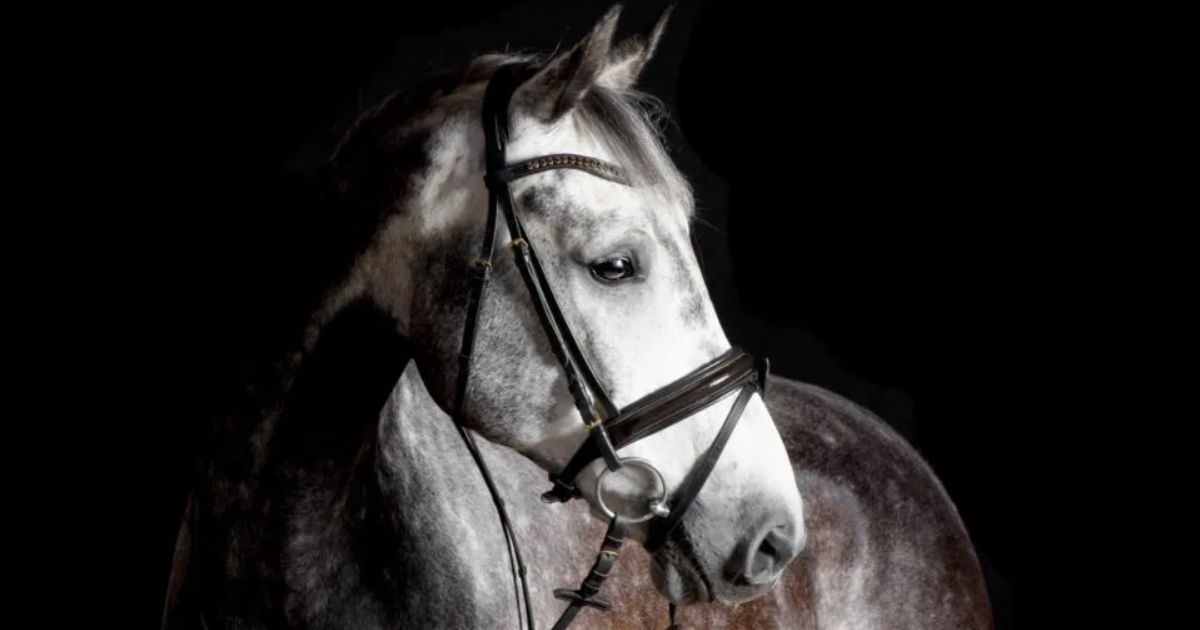Menu

Many of us use nosebands on our horse's headgear, but why exactly? There has been a debate for some time now about the tightness of the noseband, as research shows it has a significant impact on the horse's well-being. But if it's so crucial for how the horse feels during riding, why use a noseband at all? Here, with insights from a handful of dressage riders, you'll learn about the function of the noseband and the arguments for and against its use.
Read also: Expert: This muscle often causes horses problems with saddle and girth
To understand something in the present, it can be useful to look back in history. Therefore, we have allied ourselves with ancient writings and sources to read about the earliest thoughts on the use of nosebands. Here, we encounter one of Germany's most popular writings, namely Wilhelm Museler's "Reitlehre" (Riding Instructor). It was first published in the 1930s and is still published to this day. He explains that the noseband should be used to keep the bit correctly in place and still in the horse's mouth and to ensure that the horse cannot open its mouth and thereby lose connection to the reins.
A little later, around World War II, the German Richard Wätjen in the text "Das Dressurreiten" (The Dressage Riding), tells us that correctly fitted headgear is crucial if one wishes to develop their horse in dressage. He also believes that the noseband should be used to prevent the horse from opening its mouth, but unlike Wilhelm Museler, he points out that the noseband should not be tightened more than the horse can still chew.
Wilhelm Museler and Richard Wätjens both thus believe that the noseband should be used to close the horse's mouth and place the bit correctly. Their claims are many years old, but they are often the same arguments one encounters today. Especially when it comes to young horses, the reasoning is that the noseband has a good impact on the horse, because it does not have the opportunity to open its mouth. One of the explanations is that a young horse, due to its lack of experience, will naturally open its mouth and shift its jaws to avoid the pressure from the bit. But by using a noseband, it will more easily understand that it should begin to chew and suck on the bit. Without a noseband, the young horse will thus have much more difficulty focusing correctly on the bit. This is, among others, told by the French dressage rider Catherine Henriquet to Eurodressage. However, when the horse becomes older and is an experienced user of the bit, there is no obstacle to taking off the noseband in daily training, is the recommendation.
The Swiss dressage rider Corinne Daepp, who has trained horses in an Olympic dressage stable, prefers to ride horses without nosebands. She finds that especially horses, which do not chew much on the bit, are easier to achieve the approach if they are not restricted by a noseband. She says that by riding without a noseband, it is necessary to place the hands higher than what is normally seen in dressage, because the pressure from a bit is not relieved by the noseband. By specifically riding with high hands, she ensures that the horse does not experience unnecessary pressure down on the tongue, which a noseband otherwise is thought to alleviate. When she wants a reaction to the bit, she always makes sure to place the signal upwards instead of back towards her own torso. The goal is to mobilize the horse's lower jaw and get it to "taste" the bit. Once this is achieved, she lowers her hands again.
It is relatively new that we have begun to focus on the noseband and, not least, how much it should be tightened. It has indeed shown to have a significant influence on the horse's well-being, as both the nasal ridge and jaw area are extremely sensitive areas on the horse's body. This was highlighted in a major equipment study by the Danish Riding Federation back in 2014, which first saw the light of public in 2017. It opened many eyes to how uncomfortable a too-tight noseband can be for the horse and resulted in stricter requirements for riders. Later, even more research has been conducted in this area.
Read also: Boarder – Which type are you?
Sources:
Eurodressage: Noseband Special: Part II: The Purpose of the Noseband